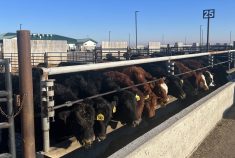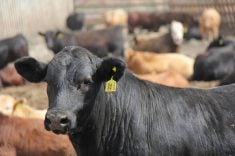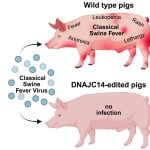Canada’s ag minister has put market access for beef on the priority list in Ottawa
The people at the Canadian Wheat Board don’t like him much but cattle producers have reason to be thankful that Gerry Ritz is the federal minister of agriculture.
It traces right back to January 9 when Mr. Ritz accepted the Beef Value Chain Roundtable recommendation to create a market access secretariat within Agriculture and Agri-Food Canada that will direct the efforts of industry, government and producers to open up new markets for agriculture commodities.
Read Also

Building demand together: The impact of Canada’s beef import levy
The beef import levy has become a central tool for ensuring balance in Canada’s beef industry
Almost as soon as he got the ball rolling with the secretariat he jumped on a plane to test out the concept at the head of a trade mission to India and Hong Kong. On January 16 he announced a new staged agreement expanding access for Canadian beef to the lucrative market of Hong Kong. For the first four months processors can ship rib cuts and most bone-in products from cattle under 30 months of age.
After the initial four months, and if Canadian product continues to meet Hong Kong requirements, processors will be given the go-ahead to sell rib cuts, boneless beef and offal from all Canadian cattle. If all goes well to the end of the year Canadian exporters will have full access for beef products from cattle under 30 months of age including such high-value cuts as T-bones and porterhouse steaks.
The Hong Kong Centre for Food Safety began processing order for bone-in beef product under 30-months in early March. This agreement is significant for a couple of reasons. For one thing it is the first time Canada has sought out a staged agreement. Up to now Canada, like the U. S., has been asking importing countries to accept OIE recommendations and grant full access for all beef products once the Specific Risk Materials have been removed.
This policy of opting for partial access as a starting point was recommended by the industry-led Beef Value Chain Roundtable back in November and it seems to have been a smart move.
Hong Kong has been accepting boneless beef from Canada since November 2004 but bone-in cuts are a very large part of the business in that part of the world. So there is every hope that this new deal with lead to a sharp increase in the 17,000 tonnes we sold them last year.
Equally important is the fact that Hong Kong is a gateway to Mainland China. Many of the meat purveyors based in city also distribute product into China and other parts of Asia. That can’t hurt. On the official front negotiations on a China-Canada import protocol for beef have been going nowhere.
One additional side-benefit to this deal is that it might gives us a foot in door for bone-in cuts with other Asian markets, notably Taiwan and South Korea. In this way Ritz, by his efforts to get personally involved in the Hong Kong negotiations, sent an important message that the Canadian government is standing behind its beef industry.
This message was received loud and clear by the U. S. meat trade. Last month in one of his regular statements on world markets, U. S. Meat Export Federation president and CEO Phil Seng noted that the U. S. has some “catching up to do in terms of market access” in Hong Kong. Canadian boneless beef was approved by Hong Kong a full year before the U. S. negotiated similar access. Since then we have been steadily losing market share in that market to them. He says this latest agreement once again gives Canada a leg up on the U. S. is this lucrative market.
It is up to Canadian processors to capitalize on that advantage. In the meantime Gerry Ritz continues to pry open new markets for their product.
February 3, Canada secures full access for beef and cattle exports to Jordan. It isn’t a big market, maybe $1 million a year according to the Canada Beef Export Federation, but it’s a start in a part of the world with large export potential for certain cuts. And it adds one more market that accepts the OIE standard for exports from countries with a controlled risk of BSE. February 17, Saudi Arabia agrees to accept boneless beef under 30 months of age and continue negotiations toward full access for Canadian beef. This deal is struck after Ritz meets with importers and the Saudi agriculture minister.
March 23, Minister Ritz arrives home from a quick trip to Seoul, South Korea where he gave their trade and agriculture ministers an ultimatum: come up with a reasonable schedule for negotiations to open their market to Canadian beef by the end of March or face the consequences. Canada, he says, is ready to put the Free Trade Agreement with S. Korea on hold or begin the process of a WTO trade action in order to open this market for your beef.
I can hardly wait to see Mr. Ritz ends up next.
















